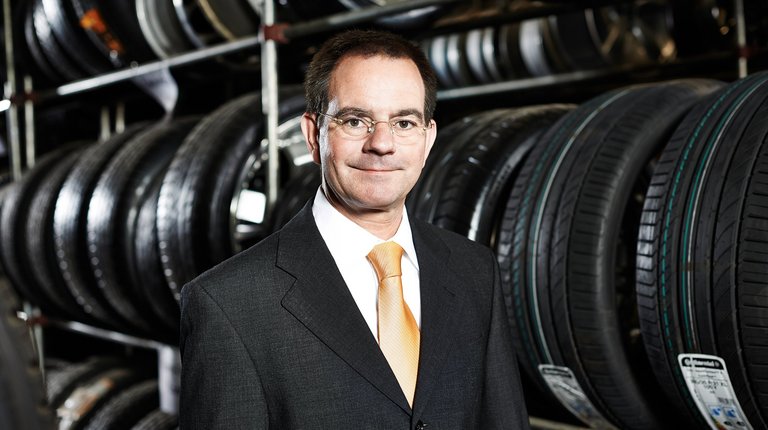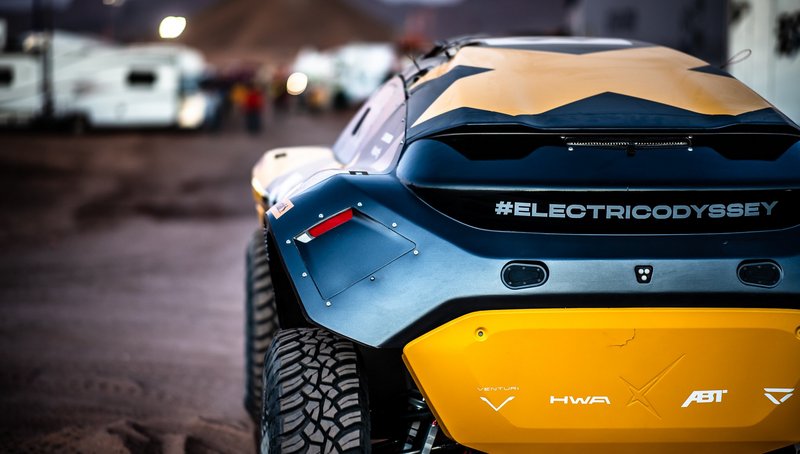Only nine months to go: New “Extreme E” racing series is about to take off
- Continental special tires for the E-racing ODYSSEY 21 race car
- Tire developers and test drivers are working under time pressure
- The racing series launches in January 2021 at Lac Rose in Senegal
Hanover, March 2020. How time flies. In January 2021, the spectacular new off-road racing series will be launched under the name "Extreme E", bringing professional motorsport with electric SUVs to the remotest corners of the earth. Continental is a founding partner and exclusive tire supplier.
It has been more than one year since the collaboration was made official. Participants still have nine months to overcome the extraordinary challenges by the first start. And the tension rises the more real the preparations become. "By the time the event calendar was officially presented, every interested party realized that we are part of a completely new and unique project," says Sandra Roslan, who is responsible for the Extreme E project at Continental. “And the schedule is tight. Unforeseen delays will be almost impossible to make up for."
On January 22 of next year, the starting signal for the so-called Ocean stage will be given between a UNESCO World Heritage Site and the Atlantic Ocean. On the banks of Lac Rose, not far from the Senegalese capital of Dakar, a series of races will begin which organizers hope will make motorsport an ambassador for climate protection. By choosing routes close to threatened habitats, the Extreme E racing series aims to raise awareness of climate change among motorsport fans worldwide, as well as politicians, residents and local authorities at the venues, and encourage them to step up their efforts to limit global warming to 1.5 degrees Celsius.
"From then on, things really take off," says Sandra Roslan. “In March 2021, we´ll start in the desert of Saudi Arabia, in May in the Himalayan mountains. Not only must the tires function on a completely new vehicle, but also on extreme courses in vastly different climatic environments."
When you consider that the development of a new tire for conventional cars generally takes three to four years, it will soon become clear the kind of challenges the tire developers at Continental have to overcome. "The ODYSSEY 21 is an extraordinary vehicle which is roughly similar to commercial SUVs in length, width and weight, but with its electrical equivalent of 550 HP has three times the torque of the Formula E Gen 2 vehicle," says Sandra Roslan. The intensive test phase has been underway since October of last year. For this, Continental is relying on people like Mikaela Åhlin-Kottulinsky. The Swedish motorsport athlete has successfully started in the Scandinavian Touring Car Championship. And she's the only woman so far to have won races in this series. The test vehicles are equipped with a custom-made model based on the successful Continental CrossContact series model. "As of today, we can say that the tires and vehicles are harmonizing well with each other," says the Continental project manager. From now until the start of the first race, it's a matter of tailoring the profile as best we can to the various extreme challenges. With the aid of ContiPressureCheck technology, tire data such as air pressure and temperature are also displayed for drivers on a screen in the cockpit during the races.
The vehicles will be handed over to all teams in August. Until then, there are plenty of test drives still on the agenda for Continental and Mikaela Åhlin-Kottulinsky.
Extreme E is organized in cooperation with Formula E. From 2021 onwards, Continental will be a premium sponsor of the Extreme E racing series. The technology company will equip all vehicles in the races with tires for the different and very demanding situations. The organizer, Formula E Holdings Ltd., expects ten teams in the first year of the series. The following dates are planned:
Ocean Stage: from January 23 to 24 at Lac Rose, Dakar, Senegal
Desert Stage: from March 6 to 7 in Sharaan, Al-'Ula, Saudi Arabia
Glacier Stage: from May 14 to 15 in the Kali Gandaki Valley, Mustang District, Nepal
Arctic Stage: from August28 to 29 in Kangerlussuaq, Greenland
Rainforest Stage: from October 30 to 31 in Santarém, Pará, Brazil

Klaus Engelhart
Press Spokesman
Passenger Car Tires / Germany, Austria, Switzerland
- +49 511 938-2455

Michael Nehring
Manager Media Relations
Passenger and Truck Tires Region Europe, Middle East & Africa
- +49 0 511 938 2230



